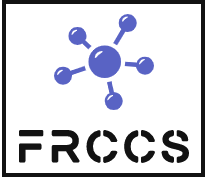Academician Professor Doctor Natasa Przulj holds a prestigious Catalan Institution for Research and Advanced Studies (ICREA) Research Professorship at Barcelona Supercomputing Center and is also a Full Professor of Computer Science at University College London.
She is a leader in network science and Artificial Intelligence (AI) algorithms for biomedical data analysis and fusion applied to precision medicine. She published 86 peer-reviewed journal and 18 peer-reviewed conference papers in the most prestigious venues, including four in Science, also 13 peer-reviewed book chapters and 2 books. Her research has been cited over 13,000 times, h-index=50, i10-index=78 (Google Scholar), and supported by over €25 million in competitive research funding. Notably, she received three prestigious, single PI, European Research Council (ERC) grants: Consolidator (2018-2025), Proof of Concept (2020-2023) and Starting (2012-2017). She has been elected into several academies: The European Laboratory for Learning and Intelligent Systems – ELLIS, in 2022; The Serbian Royal Academy of Scientists and Artists (SKANU), in 2019; Academia Europaea, The Academy of Europe, in 2017; and Fellow of the British Computer Society (BCS) Academy of Computing, in 2013. In 2014, she received the BCS Roger Needham Award, sponsored by Microsoft Research, in recognition of the potential her research has to revolutionize health and pharmaceutics. She obtained a PhD in Computer Science from the University of Toronto in 2005.
Acad. Prof. Dr. Przulj initiated utilization of non-negative matrix tri-factorization based AI / machine learning (ML) methodologies for fusion of heterogeneous, systems-level, molecular (multi-omics) networked data (the subject of her ongoing ERC Consolidator Grant) to aid to the development of personalized, or precision medicine. In addition, she initiated extraction of biomedical knowledge from the wiring patterns (topology) of omics network data to complement the genetic sequences as a source of new biomedical information (subject of her ERC Starting Grant). She is best known for introducing graphlets in 2004, a methodology now widely utilized to produce feature vectors capturing network topology, that are used as input into many AI/ML algorithms for network data analytics in various domains; graphlets are subject of around 21,400 research papers and 300 patents according to Google Scholar.
